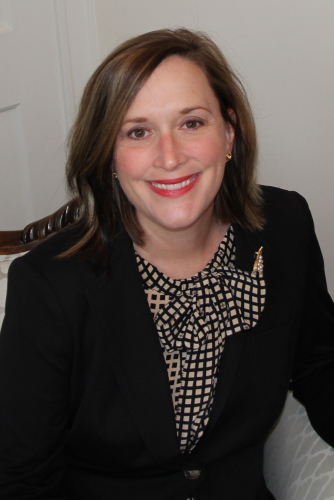Healthy Nurse, Healthy Nation™ Blog - Nursing Innovations In Antibiotic Stewardship
Published
By Elizabeth Monsees

Nurses are natural partners in antibiotic stewardship efforts. Aside from interacting with an array of disciplines and having the privilege to spend time with patients, our daily work promotes appropriate antibiotic use.
Nurses support the process of antibiotic optimization through a number of clinical practices such as: the timely initiation and discontinuation of antibiotics, obtaining cultures before antibiotics are administered, documenting accurate penicillin allergy histories, recognizing potential opportunities to change intravenous therapies to oral routes to avoid unnecessary lines or associated complications and educating families on safe antibiotic use per a recent white paper redefining antibiotic stewardship teams by ANA and CDC. This document provides a comprehensive overview of what nursing practices influence antibiotic therapy from admission through discharge. As nurse stewardship gathers steam at a national level from accrediting agencies and communication via clinical guidance documents like the CDC’s Core Elements of Hospital Antibiotic Stewardship Programs, how best to integrate nurses into stewardship is understudied and ripe for innovation.
Drawing on my research and clinical practice, some of the best ways that nurses can support stewardship endeavors are by leveraging their ability to navigate healthcare systems and build strong relationships among teams. As connectors and really the ‘central steward’ of patient care, this is something that nurses do well. The ANA/CDC document details practices and offers several ideas of where to begin this work, however, it’s important to note that nurses are uniquely positioned to identify areas where they might influence antibiotic therapy in their respective practice areas. A prime example is Maggie Gibbs, MSN, RN, CPEN, who dramatically changed stewardship programming at our facility. Maggie noted that antibiotics were being wasted after children went to surgery. This wasn’t on our stewardship radar, but that singular observation shifted our programming goals, allowing us to examine order sets that could mitigate waste and preserve precious drug resources.
Nurse involvement in stewardship efforts, for me, is about helping nurses discover their collective wisdom (Monsees, 2018). Nurses have so many insightful ways of guiding improvements in our healthcare systems and have strong track records of doing so as evidenced by their leadership in initiatives targeting device-associated infections.
With the recent calls inviting nurses to be active participants in stewardship efforts, now is the time for us to bring forth ideas that can build leaders in this area and influence safe antibiotic practices. Shining the spotlight on two different approaches, but one unifying goal of safe antibiotic use include the work of nurses Amy Straley and Mary Bette Forte. In closing, I share their stories in their own words.
Amy Straley, MSN, RN, CPN
Nurse Residency Program Coordinator
Children’s Mercy Hospital
At Children’s Mercy Hospital, we are exploring the use of Nurse Residency Programs (NRPs) as a method to engage newly licensed nurses with antibiotic stewardship processes. The structure of NRPs allows for a foundation of organizational support and the ability to have a continuous workforce focused on antimicrobial stewardship efforts as projects can be transitioned to a cohort of nurses. We sought nursing leadership support and for the past two cohorts, we have had newly licensed nurses in our Cardiology and our Pediatric Intensive Care Unit (PICU) devote 9 months to investigating nurse involvement and piloting projects uniquely meaningful to their respective units. To give you an example of this work, our newly licensed nurses in the PICU identified that antibiotic information was not routinely shared during nurse to nurse bedside report. To increase frequency of nurse to nurse communication, antibiotic details were integrated into their standardized handoff tool. This simple intervention led to a dramatic increase in the frequency of nurse communication of antibiotic use, indication, duration, and current day of course. With this next cohort, PICU nurses are building on that initial work and expanding it to prompt conversation with providers during interdisciplinary patient rounds. By enhancing these interdisciplinary discussions, we are hoping to develop visual aids to improve family education.
Mary Bette Forte, MSN-Ed, RN
ASP Rounds Coordinator
Clinical Level 3 Telemetry RN
Pomona Valley Hospital Medical Center
In my telemetry unit we collaborated with an ASP pharmacist, infection preventionist, nurse practitioner and frontline nurses to evaluate antibiotic, acid suppressant medication and invasive catheter use. We held rounds twice a week and during that time we discussed opportunities for therapy modification, which helped to promote conversation with the attending physicians. These conversations empowered nurses in their knowledge and supported a clear plan of care for their patients. We examined the impact on patient outcomes and found that urinary catheters days, acid suppressant use, and days of antibiotic use declined. As a team, we have cut over half our hospital onset c. difficile rates and are reaching four years with zero CLABSI. We are excited to report that we are expanding these efforts on other units. For us, these interdisciplinary rounds boosted confidence and created a space for shared learning.
Elizabeth Monsees, PhD, MBA, RN, CIC, FAPIC is the Antibiotic Stewardship Program Manager and Senior Patient Care Services Researcher for Children’s Mercy Kansas City in Kansas City, MO.
References:

Nurses are natural partners in antibiotic stewardship efforts. Aside from interacting with an array of disciplines and having the privilege to spend time with patients, our daily work promotes appropriate antibiotic use.
Nurses support the process of antibiotic optimization through a number of clinical practices such as: the timely initiation and discontinuation of antibiotics, obtaining cultures before antibiotics are administered, documenting accurate penicillin allergy histories, recognizing potential opportunities to change intravenous therapies to oral routes to avoid unnecessary lines or associated complications and educating families on safe antibiotic use per a recent white paper redefining antibiotic stewardship teams by ANA and CDC. This document provides a comprehensive overview of what nursing practices influence antibiotic therapy from admission through discharge. As nurse stewardship gathers steam at a national level from accrediting agencies and communication via clinical guidance documents like the CDC’s Core Elements of Hospital Antibiotic Stewardship Programs, how best to integrate nurses into stewardship is understudied and ripe for innovation.
Drawing on my research and clinical practice, some of the best ways that nurses can support stewardship endeavors are by leveraging their ability to navigate healthcare systems and build strong relationships among teams. As connectors and really the ‘central steward’ of patient care, this is something that nurses do well. The ANA/CDC document details practices and offers several ideas of where to begin this work, however, it’s important to note that nurses are uniquely positioned to identify areas where they might influence antibiotic therapy in their respective practice areas. A prime example is Maggie Gibbs, MSN, RN, CPEN, who dramatically changed stewardship programming at our facility. Maggie noted that antibiotics were being wasted after children went to surgery. This wasn’t on our stewardship radar, but that singular observation shifted our programming goals, allowing us to examine order sets that could mitigate waste and preserve precious drug resources.
Nurse involvement in stewardship efforts, for me, is about helping nurses discover their collective wisdom (Monsees, 2018). Nurses have so many insightful ways of guiding improvements in our healthcare systems and have strong track records of doing so as evidenced by their leadership in initiatives targeting device-associated infections.
With the recent calls inviting nurses to be active participants in stewardship efforts, now is the time for us to bring forth ideas that can build leaders in this area and influence safe antibiotic practices. Shining the spotlight on two different approaches, but one unifying goal of safe antibiotic use include the work of nurses Amy Straley and Mary Bette Forte. In closing, I share their stories in their own words.
Amy Straley, MSN, RN, CPN
Nurse Residency Program Coordinator
Children’s Mercy Hospital
At Children’s Mercy Hospital, we are exploring the use of Nurse Residency Programs (NRPs) as a method to engage newly licensed nurses with antibiotic stewardship processes. The structure of NRPs allows for a foundation of organizational support and the ability to have a continuous workforce focused on antimicrobial stewardship efforts as projects can be transitioned to a cohort of nurses. We sought nursing leadership support and for the past two cohorts, we have had newly licensed nurses in our Cardiology and our Pediatric Intensive Care Unit (PICU) devote 9 months to investigating nurse involvement and piloting projects uniquely meaningful to their respective units. To give you an example of this work, our newly licensed nurses in the PICU identified that antibiotic information was not routinely shared during nurse to nurse bedside report. To increase frequency of nurse to nurse communication, antibiotic details were integrated into their standardized handoff tool. This simple intervention led to a dramatic increase in the frequency of nurse communication of antibiotic use, indication, duration, and current day of course. With this next cohort, PICU nurses are building on that initial work and expanding it to prompt conversation with providers during interdisciplinary patient rounds. By enhancing these interdisciplinary discussions, we are hoping to develop visual aids to improve family education.
Mary Bette Forte, MSN-Ed, RN
ASP Rounds Coordinator
Clinical Level 3 Telemetry RN
Pomona Valley Hospital Medical Center
In my telemetry unit we collaborated with an ASP pharmacist, infection preventionist, nurse practitioner and frontline nurses to evaluate antibiotic, acid suppressant medication and invasive catheter use. We held rounds twice a week and during that time we discussed opportunities for therapy modification, which helped to promote conversation with the attending physicians. These conversations empowered nurses in their knowledge and supported a clear plan of care for their patients. We examined the impact on patient outcomes and found that urinary catheters days, acid suppressant use, and days of antibiotic use declined. As a team, we have cut over half our hospital onset c. difficile rates and are reaching four years with zero CLABSI. We are excited to report that we are expanding these efforts on other units. For us, these interdisciplinary rounds boosted confidence and created a space for shared learning.
Elizabeth Monsees, PhD, MBA, RN, CIC, FAPIC is the Antibiotic Stewardship Program Manager and Senior Patient Care Services Researcher for Children’s Mercy Kansas City in Kansas City, MO.
References:
- ANA & CDC. (2017). Redefining the Antibiotic Stewardship Team:
Recommendations from the American Nurses Association/Centers for Disease Control and Prevention Workgroup on the Role of Registered Nurses in Hospital Antibiotic Stewardship Practices. - Ha, D. et al. (2019). A Multidisciplinary Approach to Incorporate Bedside Nurses into Antimicrobial Stewardship and Infection Prevention.
- Monsees, E. et al. (2018). Integrating staff nurses in antibiotic stewardship: Opportunities and barriers
Blog Safety
10/28/2019 12:25pm CDT



Post a Comment or Question